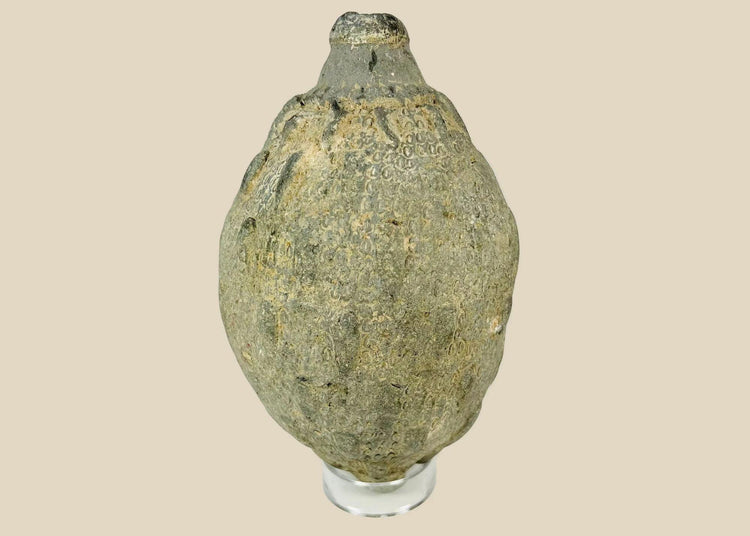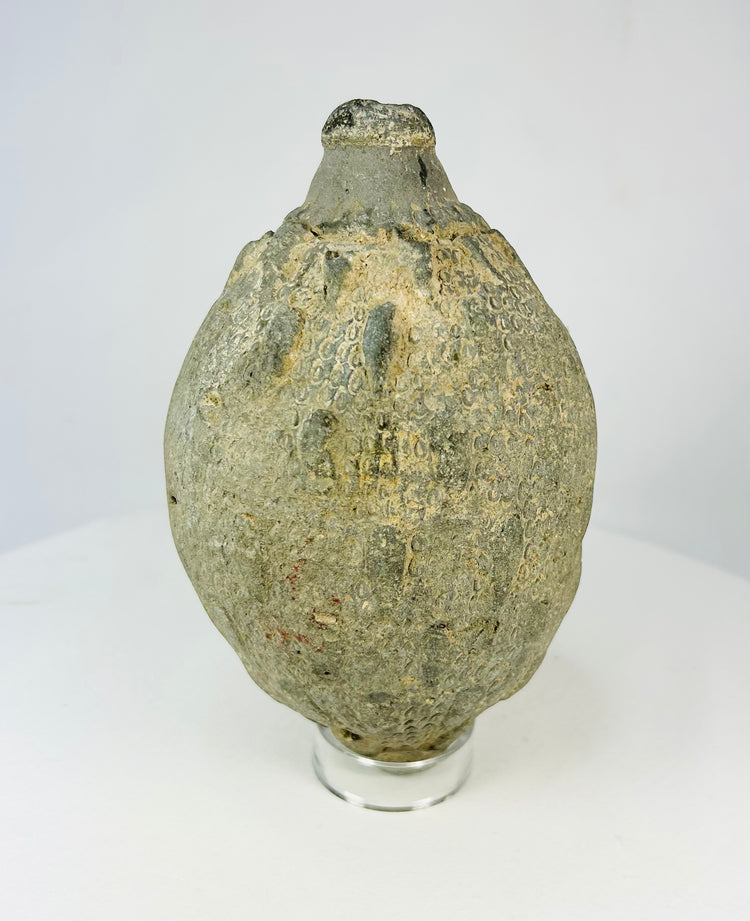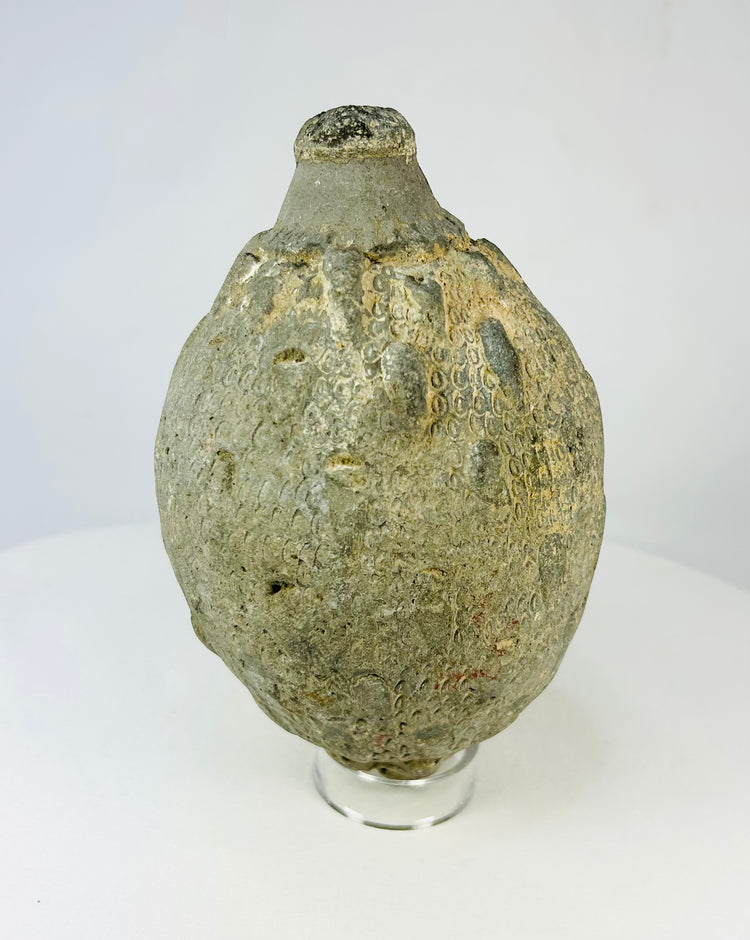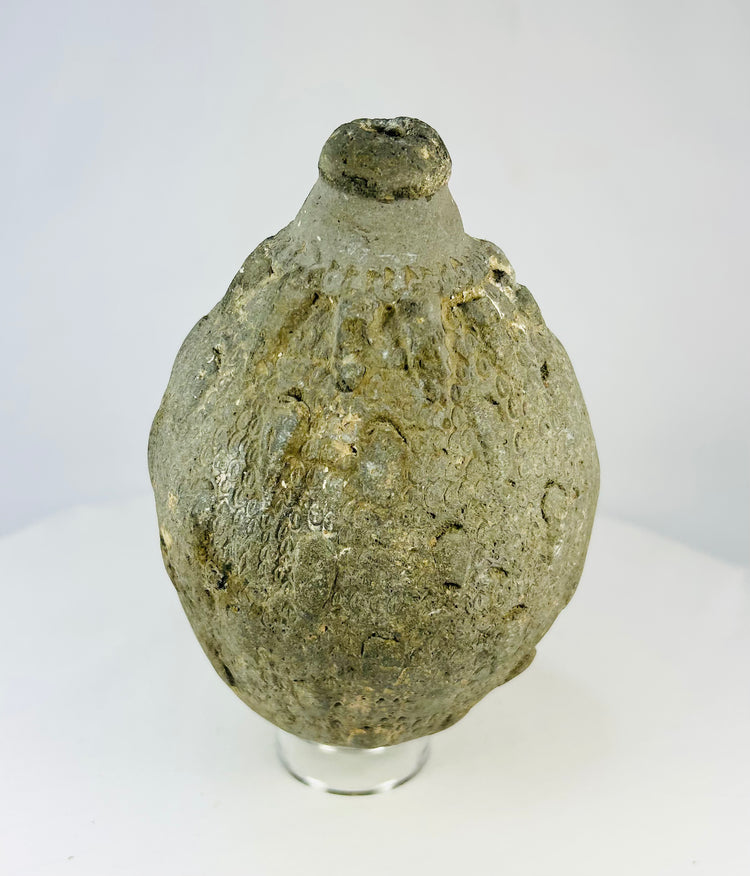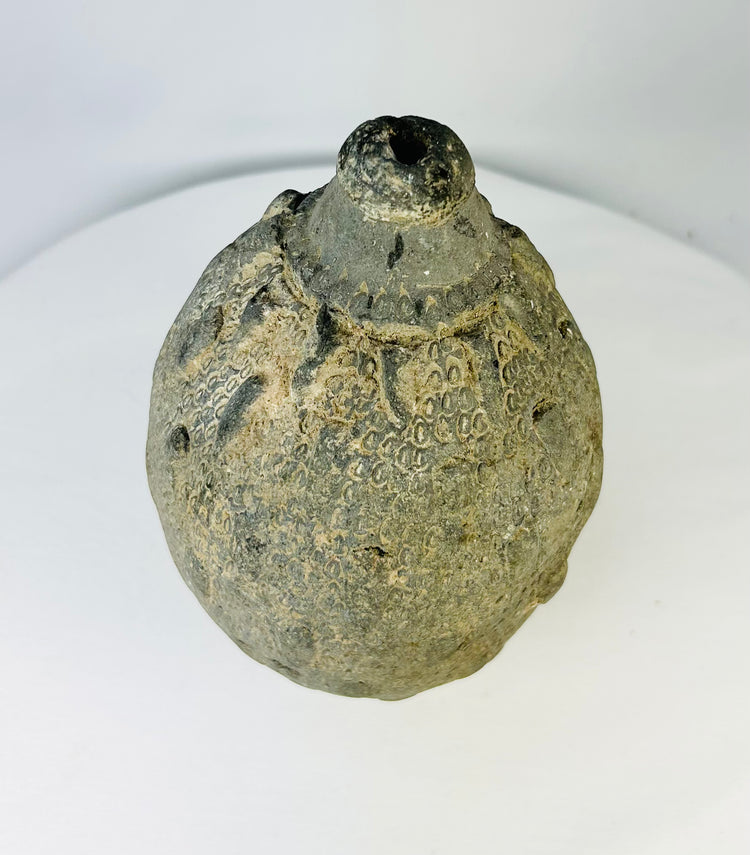Islamic | Greater Persia | Ceramic Hand Grenade | Circa 10th–12th Century CE
Description
More
Less
Historical Context & Origin
Region: Greater Persia (modern-day Iran)
Material: Unglazed ceramic with textured surface
Period: 10th–12th Century CE
Description
An exceptionally rare Islamic ceramic hand grenade, dating to the medieval period. The vessel has a bulbous body tapering to a narrow neck, with a small mouth opening designed to be filled with incendiary substances such as naphtha. Its textured exterior provided grip for handling in battle. These grenades were crucial in siege warfare and naval combat, reflecting the advanced engineering and chemical knowledge of Islamic military technology during the 10th–12th centuries CE.
Features
- Bulbous ceramic body with narrow neck and small opening
- Textured surface for grip and handling
- Functional incendiary weapon design, intended for filling and sealing with combustible materials
- Represents early development of handheld explosive devices
Cultural & Military Significance
The use of ceramic grenades marks a significant milestone in medieval military innovation. Islamic engineers harnessed petroleum-based incendiaries to create devastating weapons for close combat and siege warfare. Such objects underscore the technological ingenuity of the Islamic world and its influence on the evolution of global warfare practices.
Condition
Good archaeological condition with stable form and intact structure. Surface wear and patina consistent with great age, including minor abrasions and earthen deposits. Despite centuries of burial, the grenade preserves its distinctive profile and utilitarian design.
Dimensions (approximate)
Height: 7 in
Age
10th–12th Century CE, Islamic world, likely Greater Persia
Learn More
View a Comparable 12th-Century Ceramic Hand Grenade at the Royal Ontario Museum—An Excavated Example That Had Already Been Detonated
Read About The History of Hand Grenades
Explore Our Curated Collection of Historical Weaponry
Description
Historical Context & Origin
Region: Greater Persia (modern-day Iran)
Material: Unglazed ceramic with textured surface
Period: 10th–12th Century CE
Description
An exceptionally rare Islamic ceramic hand grenade, dating to the medieval period. The vessel has a bulbous body tapering to a narrow neck, with a small mouth opening designed to be filled with incendiary substances such as naphtha. Its textured exterior provided grip for handling in battle. These grenades were crucial in siege warfare and naval combat, reflecting the advanced engineering and chemical knowledge of Islamic military technology during the 10th–12th centuries CE.
Features
- Bulbous ceramic body with narrow neck and small opening
- Textured surface for grip and handling
- Functional incendiary weapon design, intended for filling and sealing with combustible materials
- Represents early development of handheld explosive devices
Cultural & Military Significance
The use of ceramic grenades marks a significant milestone in medieval military innovation. Islamic engineers harnessed petroleum-based incendiaries to create devastating weapons for close combat and siege warfare. Such objects underscore the technological ingenuity of the Islamic world and its influence on the evolution of global warfare practices.
Condition
Good archaeological condition with stable form and intact structure. Surface wear and patina consistent with great age, including minor abrasions and earthen deposits. Despite centuries of burial, the grenade preserves its distinctive profile and utilitarian design.
Dimensions (approximate)
Height: 7 in
Age
10th–12th Century CE, Islamic world, likely Greater Persia
Learn More
View a Comparable 12th-Century Ceramic Hand Grenade at the Royal Ontario Museum—An Excavated Example That Had Already Been Detonated
Read About The History of Hand Grenades
Explore Our Curated Collection of Historical Weaponry
You May Also Like






















